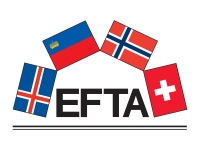Vláknová optika
- + Hlavní oblasti
- +Elektrotechnické inženýrství (8)
- Radiokomunikace a kabelové systémy (0)
- Přístroje pro elektrické měření (0)
- Elektroakustika a ultrazvuk (0)
- Přístrojové transformátory (0)
- Elektronky a obrazovky (0)
- Kondenzátory a rezistory (0)
- Přístroje jaderné techniky (2)
- Kabely a vodiče pro telekomunikace (0)
- Polovodiče (1)
- Elektromechanické součástky (0)
- Piezoelektrické prvky (0)
- Magnetické součástky (0)
- Plošné spoje (0)
- Zdravotnické elektrické přístroje (0)
- Řízení procesů (2)
- Elektronická měřicí zařízení (0)
- Automatická řídicí zařízení (0)
- Bezpečnost záření a laserová zařízení (0)
- Poplachové systémy (0)
- Navigační přístroje (0)
- Fotovoltaické systémy (1)
- Zařízení informační technologie a zvukové, obrazové a audiovizuální zařízení a systémy (0)
- Vláknová optika (2)
- Automatizované konstruování (0)
- Elektrotechnické systémy povrchové dopravy (0)
- Letectví (0)
Oblast zaměření:
Vláknová optika
Komise : IEC/SC 86C
(Fibre optic systems and active devices)
Původce: ISO\IEC\CEN\CENELEC
K připomínkám do: 20.01.2026
Amendment
Oblast zaměření:
Vláknová optika
Komise : IEC/SC 86B
(Fibre optic interconnecting devices and passive components)
Původce: ISO\IEC\CEN\CENELEC
K připomínkám do: 27.01.2026
The purpose of this part of IEC 61300 is to describe the procedure required to measure the spring compression force of the coupling sleeve for rectangular ferrule multi-fibre connectors.
